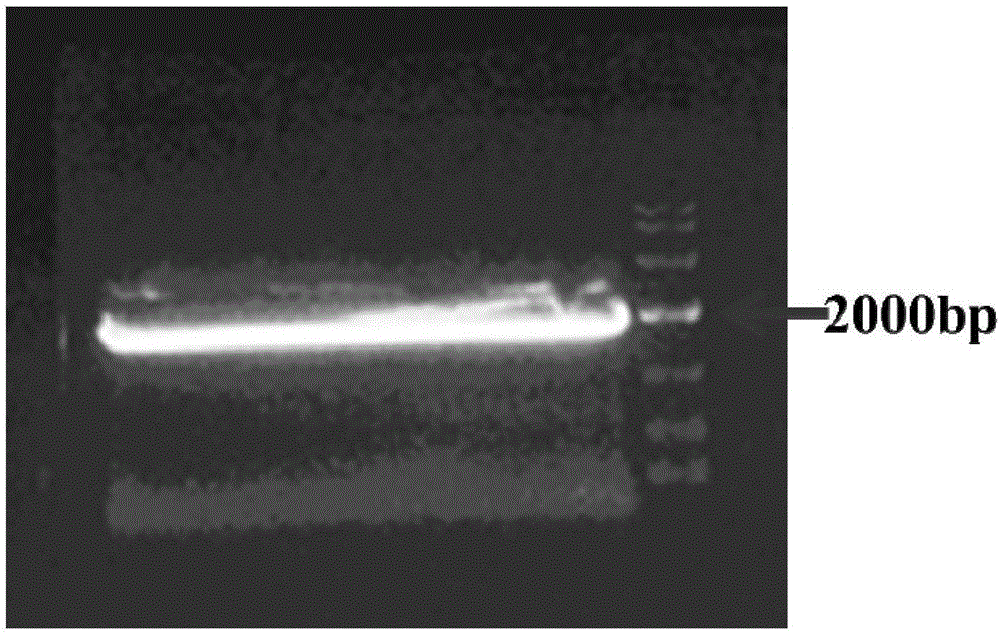Method for obtaining pigeon magnetic-sensing protein by using prokaryotic expression system
A prokaryotic expression and pigeon technology, applied in the field of genetic engineering, can solve the problems of easy protein degradation, prosthetic group falling off, low expression level, etc., and achieve the effect of low technical complexity, low cost and low expression level
- Summary
- Abstract
- Description
- Claims
- Application Information
AI Technical Summary
Problems solved by technology
Method used
Image
Examples
Embodiment 1
[0057] 1. Obtain the target gene sequence:
[0058] Use the pFastBac HT A vector containing the ClCry1 gene sequence already in the laboratory as a template (for the map of the pFastBac HT A vector, see figure 1 ), design primers with Hind III and BamH I as restriction sites, and use PCR to obtain the target gene sequence from the pFast HTA vector.
[0059] The ClCry1 gene sequence connected to the pFastBac HT A vector is as follows:
[0060] ATGGGGGTGAACGCCGTGCACTGGTTCCGCAAGGGGCTGCGGCTCCACGACAACCCGGCGCTGCGGGAGTGCATCCAGGGCGCCGACACGGTCCGCTGCGTCTACATCCTGGACCCCTGGTTCGCCGGCTCTTCCAACGTGGGCATCAACAGGTGGCGATTCCTGCTTCAATGTCTTGAGGATCTTGATGCCAATCTACGGAAACTGAATTCACGTTTGTTTGTTATTCGTGGACAGCCAGCAGATGTTTTCCCCAGACTTTTTAAGGAATGGAATATTACAAAACTTTCTATTGAATATGATTCTGAACCATTCGGGAAGGAAAGAGATGCAGCGATTAAGAAGTTGGCTAGTGAAGCTGGAGTGGAGGTCATTGTTCGAATTTCCCACACATTATATGACCTAGACAAAATAATAGAATTAAATGGAGGACAACCTCCTCTTACTTACAAGCGATACCAGACCCTAATTAGCAGAATGGAGCCACTAGAGATGCCAGTGGAGACTATAACCCCAGAAGTAATGGAAAAATGTACTACTCCAG...
PUM
 Login to View More
Login to View More Abstract
Description
Claims
Application Information
 Login to View More
Login to View More - R&D
- Intellectual Property
- Life Sciences
- Materials
- Tech Scout
- Unparalleled Data Quality
- Higher Quality Content
- 60% Fewer Hallucinations
Browse by: Latest US Patents, China's latest patents, Technical Efficacy Thesaurus, Application Domain, Technology Topic, Popular Technical Reports.
© 2025 PatSnap. All rights reserved.Legal|Privacy policy|Modern Slavery Act Transparency Statement|Sitemap|About US| Contact US: help@patsnap.com



